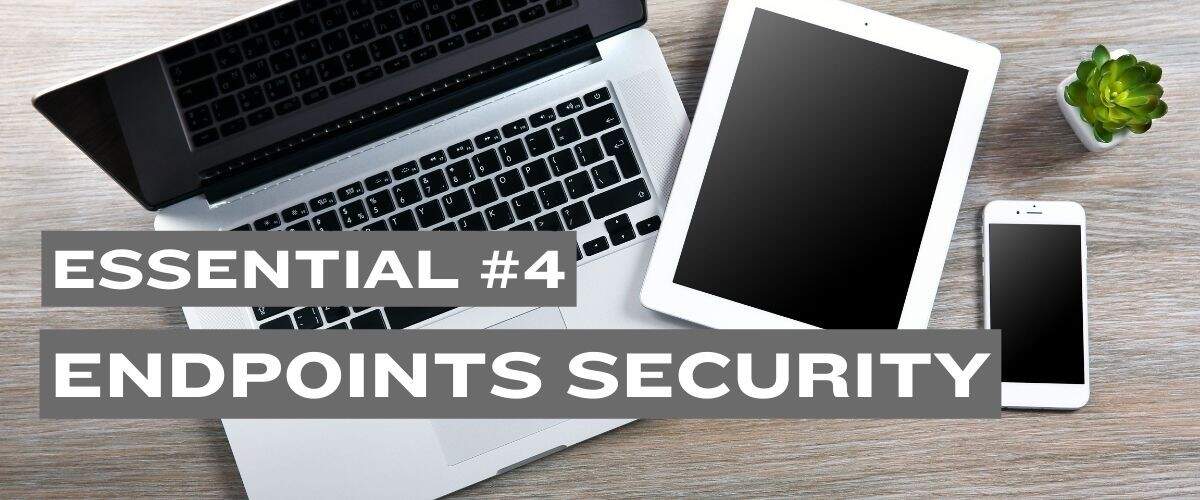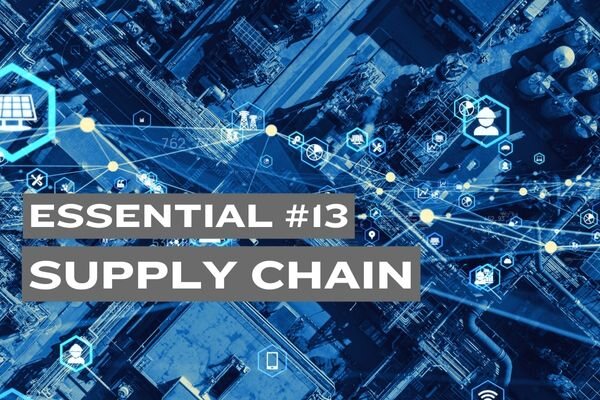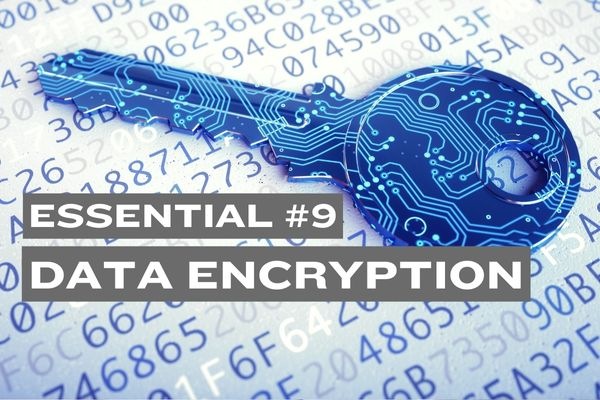Essential #4: Secure the Endpoints

Discover how implementing robust endpoint security measures can significantly enhance your organization's digital posture and protect against evolving cyber threats.
🛡️ Why Secure Endpoints
Endpoints, including laptops, desktops, mobile devices, and IoT gadgets, are often primary targets of cyberattacks. Securing these devices is essential to:
- Protect Against Sophisticated Threats: Identify, detect, and prevent attacks before they cause damage.
- Enhance Visibility: Gain a comprehensive overview of your infrastructure for better risk management.
- Early Compromise Detection: Quickly identify compromised endpoints to prevent adversaries from moving laterally within your network.
🔧 Fundamental Security Tools
Before integrating more advanced solutions, ensure your endpoints are equipped with these essential tools to establish a strong baseline of protection:
- Local Firewalls on Endpoints: Control inbound and outbound network traffic on individual devices.
- Next-Generation Antivirus (NGAV): Use AI and ML to detect and prevent advanced malware and cyber threats.
- Anti-Exploit Applications: Block malicious behavior patterns to prevent exploitation of software vulnerabilities.
- Endpoint Detection and Response (EDR): Monitor and respond to threats on endpoints in real-time.
- Security Information and Event Management (SIEM) Integration: Utilize local logs/events forwarders to detect anomalies through centralized log analysis.
- Vulnerability and Patch Management Integration: Employ local agents or remote scanning to ensure endpoints are free from known vulnerabilities.
- (Host) Intrusion Detection/Prevention Systems (HIDS/HIPS): Identify and block intrusion attempts on the host.
- Disk and File Encryption Tools: Encrypt data at rest to protect against unauthorized access in case of device theft or compromise.
- Device Control Software: Restrict the use of USB devices and external drives to prevent malware introduction or data leaks.
- Hardening Local Configuration: Enforce secure configurations, disable unnecessary services, enable security features, and limit administrative privileges.
- Application Whitelisting/Control: Allow only approved applications to run on endpoints, blocking unauthorized or malicious software.
- Backup Agents: Ensure regular, secure backups of endpoint data to enable recovery from ransomware or other attacks.
- Identity and Access Management (IAM): Implement IAM solutions to manage user identities, enforce multi-factor authentication (MFA), and ensure that only authorized individuals access endpoints and sensitive resources.
🔗 Endpoint Security Tools with Platform Integration
Beyond the fundamental tools, consider integrating solutions that leverage your existing infrastructure and offer enhanced capabilities. Ensure that endpoints meet the fundamental requirements before deploying these:
- Additional SIEM Correlations: Build on your fundamental SIEM setup for deeper incident analysis.
- Advanced EDR Capabilities: Extend basic EDR with threat hunting and automated containment features.
- Cloud-Based Management Platforms: Centralize policy enforcement, monitoring, and updates across all endpoints.
🔧 Harden Endpoint Configurations
Strengthening endpoint security also involves refining configurations:
- Refined Policy Enforcement: Adjust configurations as new threats emerge and as your business requirements evolve.
- Continual Auditing: Regularly review settings and logs to ensure optimal performance and security.
🔒 Data Safety
Protecting your endpoint data is crucial for maintaining operational integrity and safeguarding sensitive information:
- Robust Backup Strategy: Regular, secure backups enable swift recovery from ransomware or data corruption incidents.
- Comprehensive Encryption: Encrypting data at rest and in transit ensures sensitive information remains confidential.
- Strict Device Control: Limiting removable media and external drive usage reduces the risk of data leaks and unauthorized access.
🛠️ How to Secure Endpoints
-
Needs Assessment
- Device Inventory: Maintain a comprehensive list of all endpoints.
- Risk Assessment: Identify and prioritize potential threats based on device type and criticality.
-
Select and Deploy Security Tools
- Leverage Fundamental Tools First: Ensure endpoints meet the baseline protections outlined above.
- Integrate Advanced Solutions: Add more sophisticated tools, such as advanced EDR or cloud-based management, once fundamentals are in place.
-
Integration and Configuration
- Compatibility Checks: Confirm that chosen tools integrate smoothly with existing systems.
- Custom Settings: Adapt configurations to meet the unique security needs of your organization.
- Policy Enforcement: Ensure consistent application of security policies across all endpoints.
-
Continuous Monitoring and Maintenance
- Regular Updates: Keep endpoint software and tools current to protect against new threats.
- Data Analysis: Use analytical features to identify patterns, trends, and anomalies.
- Performance Evaluation: Continually assess and refine your security measures.
📈 Benefits of Securing Endpoints
- Early Threat Detection: Identify and neutralize threats before they escalate.
- Reduced Response Times: Respond swiftly to incidents, minimizing damage.
- Improved Compliance: Meet current security standards and regulations.
- Optimized Processes: Automate repetitive tasks, allowing resources to focus on strategic initiatives.
⚠️ Challenges of Implementation
- Integration Complexity: Merging multiple tools and policies can be complex and time-consuming.
- Initial Investment: Tools, training, and infrastructure upgrades can represent a significant cost.
- Ongoing Management: Continual monitoring and policy updates require dedicated resources and expertise.
🔗 Stay Connected and Follow this Series
Follow our Blog to ensure you don't miss upcoming posts in the "Security Essentials" series. By staying engaged, you will benefit from:
- Practical Guidance: Actions you can take today to enhance your security posture.
- Proven Strategies: Approaches validated by cybersecurity experts.
- Recommended Tools: Tailored solutions for your unique requirements.
- Case Studies: Real-world examples demonstrating effective best practices.
Whether you're an SME or a large enterprise, "Security Essentials" provides the insights and tools necessary to build a robust defense against cyber threats.
Together, let's build a strong and resilient defense against cyberattacks.





